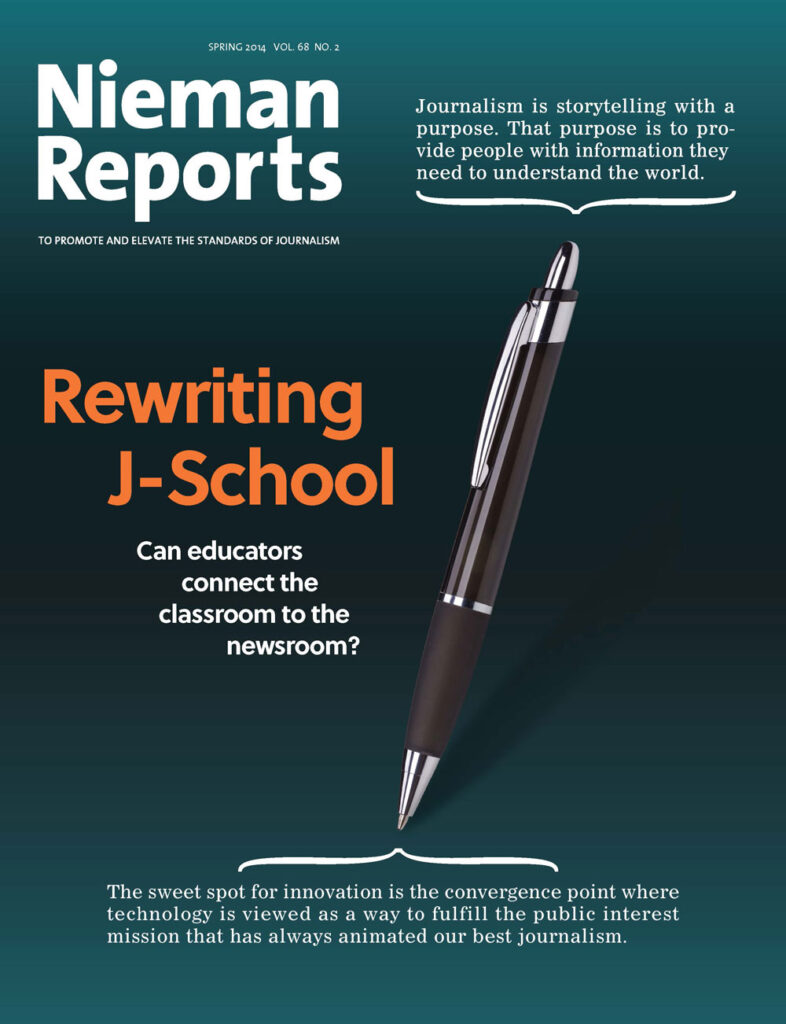When a handful of students show up this fall for the new media innovation graduate program at Northeastern University, they'll learn coding, information visualization, videography, database management—even game design. The Tow-Knight Center for Entrepreneurial Journalism at the City University of New York (CUNY) is incubating journalism entrepreneurs who can earn master's degrees and advanced certificates in innovative approaches to the media business. Uptown, at Columbia University, the journalism school and computer science department are in the first year of teaming up to deliver a certificate program for journalists and others in data technology and using data.
Journalism education has come to the same ominous inflection point that journalism itself has reached—and the stakes are just as high. Universities are shutting down or proposing to shut down journalism schools, or merging them with other departments. Enrollment is falling—dramatically, for graduate programs—while it's rising at newer institutions and those with an emphasis on digital media. New forms of teaching online and new credentials menace all of higher education's monopoly on academic credit.
As technology advances, professionals want more training, like they'll get at programs such as Northeastern's. And foundations that have filled the void left when media companies stopped lavishing their wealth on journalism schools are aggressively pressing for reform.
In response, some journalism schools are abruptly transforming themselves to teach new forms of media and new methods of delivering the news. "We are trying to blow up everything," says Jeff Howe, head of the new, three-semester program at Northeastern. Supported by a $250,000 grant from the John S. and James L. Knight Foundation, the program will revolve around an "innovation seminar" in which teams of students will apply their newfound skills to real-world projects in news delivery or reporting techniques.
"Like journalism, education is ripe for disruptive innovation," says Howard Finberg, director of partnerships and alliances at the Poynter Institute. If j-schools fail to respond, Finberg says, they are "at risk of being bypassed or overshadowed." A recent Poynter survey—which some argue demonstrates that educators are outpacing editors in their approaches to digital innovation—underlines the divide between j-schools and newsrooms. Educators are more likely than professional journalists to believe it's important for journalism graduates to have multimedia skills, for instance, according to the survey Poynter released in April. They are more likely to think it's crucial for j-school grads to understand HTML and other computer languages, and how to shoot and edit video and photos, record audio, tell stories with visuals, and write for different platforms.
More educators than editors put an emphasis on such newly important skills as the ability to use computers to analyze large amounts of information. More educators think knowledge of other cultures is important as the diversity of their subjects and audiences deepens. And as the industry searches for new revenue models, almost twice as many educators as editors think journalism students need to learn about the business side of media, as they do at CUNY and Northeastern.
In that same Poynter survey, many editors said the most important thing they need in new employees is a foundation of critical thinking and problem-solving fundamentals, and knowledge of teamwork and collaboration they say comes from the broader liberal-arts education many of them got—not strictly vocational skills, which fast-changing technology can quickly make obsolete, and which can be learned on the job. More than 40 percent don't even think it's important for prospective journalists to major in journalism.
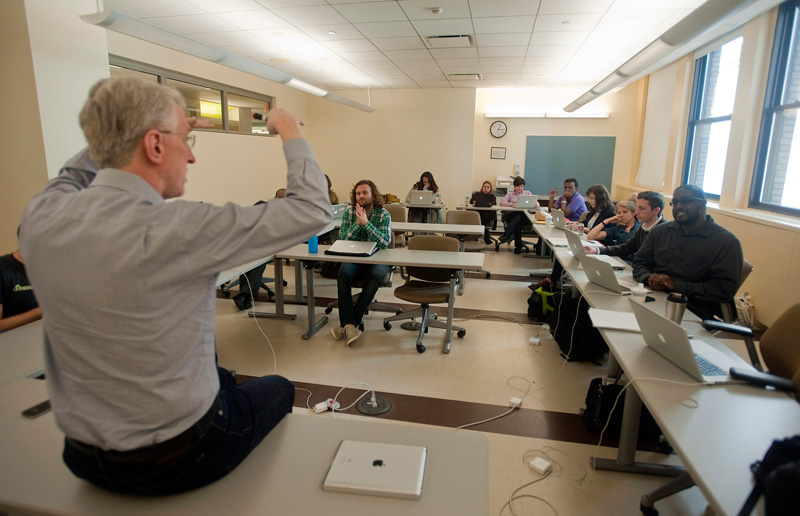
I don't think journalists need to go to journalism school," says Mizell Stewart, vice president of content for the newspaper division at E.W. Scripps. He argues a combination of the liberal arts and experience in campus media are the best learning labs for future journalists: "I do think journalists need to have some professional or campus experience as a journalist … Campus media is really the opportunity for students to learn, in what is for the most part a fairly safe environment, how to interact with folks, how to deal with people in power, how to access records. Those experiences provide students with that extra layer of skills in terms of leadership, in terms of time management, in terms of what it means to manage up, across, and around, what it means to be a good colleague. … Those are things we look for."
But even as journalism schools transform themselves, and as the latest crop of newly minted graduates heads into the job market, educators and editors are joining forces to accomplish what neither can do so easily on their own—give students real-world reporting experience and provide daily and in-depth news coverage.
Even as journalism schools continue to transform themselves, there remains a deep division over what skills future journalists actually need to learn
Journalism schools "have a luxury I'm sure is not always available to editors in newsrooms, which is to stand aside from the pace of demand that media organizations have been dealing with," says Steve Coll, a Pulitzer Prize-winning former newspaper and magazine reporter and the new dean of the Columbia University Graduate School of Journalism. "In those newsrooms it's very hard to step back and think about five or 10 years out. It's supposed to be an advantage of a university to do that, and I do feel that happening."
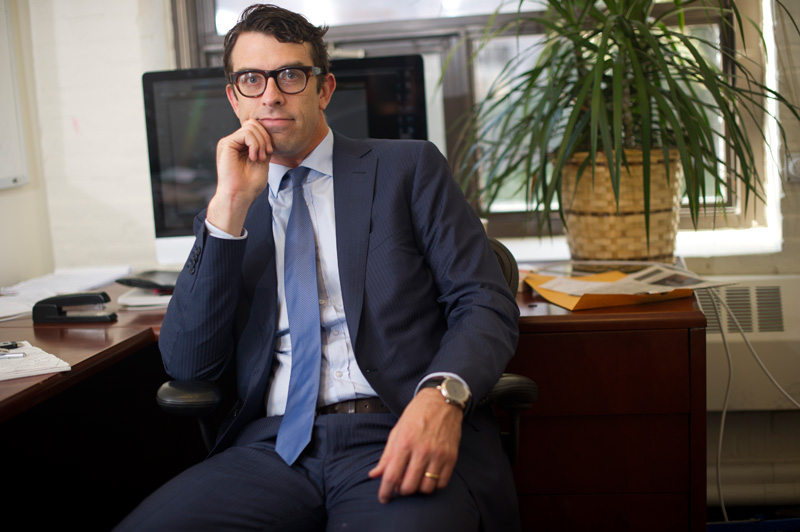
Other things have changed, too. More journalists like Coll, rather than career academics, are being named to head up journalism schools. There are more collaborations in which students produce content for real-world print and online media. "Without the pressure of having to grow revenue or meet budgets, we have some freedom to experiment and try new things," says Lorraine Branham, a former journalist at The Philadelphia Inquirer and Baltimore Sun and dean of the S.I. Newhouse School of Public Communications at Syracuse University, which has established a center for digital media entrepreneurship and an endowed chair in journalism innovation.
People on all sides of the question over what students ought to learn acknowledge that news organizations have moved from needing specialist reporters to relying on generalists who not only report and write, but take pictures and videos and record sound. That means newly minted journalists need to arrive with broader skills. Yet 40 percent of 2012 journalism graduates said their educations included too little technical training, a survey by the Grady College of Journalism and Mass Communication at the University of Georgia found.
"There isn't any possible way the school could teach you everything because things are changing so quickly," says Taylor Goldenstein, who graduated in December with a bachelor's degree in journalism from the University of Illinois, Urbana-Champaign and is now interning at the Chicago Tribune. "But I do think that the schools are a little bit behind," especially in teaching such things as coding.
Newspapers have also bought out veterans with institutional experience, or given them so much more to do that rookies no longer get the mentoring they once did under the informal newsroom apprenticeship model. "Especially in such a competitive news environment where budgets are shrinking, news organizations expect you to hit the ground running from day one," says Mauro Whiteman, a new graduate of the Walter Cronkite School of Journalism and Mass Communication at Arizona State University. "You're expected to be a producing person in the newsroom."
While online media command only a fraction of the advertising revenue that traditional print newspapers did—and still don't pay much—they are also growing exponentially. BuzzFeed now has 170-plus full-time editorial staffers, the vast majority of whom were hired last year. Gawker's staff has nearly tripled, to 132, in the last seven years, and Ezra Klein's Vox, Nate Silver's FiveThirtyEight and Pierre Omidyar's First Look Media are all hiring. Pew estimates that around 500 digital news organizations have collectively produced about 5,000 jobs in the last 10 years—nowhere near the roughly 16,000 the American Society of News Editors says have been cut by newspapers alone, but a beachhead. (While the mainstream media continue to shed jobs, some are hiring. The Washington Post has added 50 journalists this year alone, and Time Inc. has hired 30, mostly to work at Time.com.)
Students seem acutely aware that the way to stake a claim to one of the diminishing number of journalism jobs is to master not only writing and reporting, but videography, social media, and other increasingly complex platforms. In the Poynter survey, more students than educators said knowing HTML, for example, is important.
"I'm learning how to code and make graphics that distill information in a completely different way, and using video to tell more creative stories and learning cool editing techniques," says Caitlin Cruz, a graduate of Arizona State's journalism program now on a 10-week investigative reporting internship at The Seattle Times. "And I really think it goes back to learning how to tell the story in the medium that you want."
But even executives who hire for new media caution that too much specialization can be a bad thing. "There can be a problem when people think almost too pragmatically about, 'These are the new media companies that are hiring, so I need to tick those boxes and be a data reporter who can use social media,' " says Jason Mojica, editor in chief at Vice News, who was invited to lecture at the Columbia Graduate School of Journalism. ("That Columbia brought me in says that they are looking beyond core curriculum and textbooks," he says.) "Some of that old-school traditional j-school stuff can be incredibly valuable. Can you write a script? Can you fact-check your own stories? What you want is the best of both worlds." He won't get any argument from Coll, at Columbia, who says technology will change, but learning journalism basics is essential: "At this school, there's a high degree of confidence that the values can adapt and survive."
Even executives who hire for new media, like BuzzFeed's Shani Hilton, caution against overemphasizing the importance of technical skills
BuzzFeed deputy editor in chief Shani Hilton agrees that what she wants to see in new employees isn't necessarily specific technical skills, but "agnosticism about format. Some of our news stories are very typical, and some are just big captions with the relevant information, and some involve quizzes. We need people who remember that what makes a news story isn't necessarily the format, but the information." The answer is to teach both basic writing and reporting and technology, says Eric Newton, former managing editor of the Oakland Tribune and senior adviser to the president at the John S. and James L. Knight Foundation, a leading advocate for reforming journalism education: "To teach journalism in the digital age you have to teach both journalism and the digital age—and use modern tools to do it. That's why the schools that are serious about this are getting bigger, not smaller." Newton advocates mimicking medical schools' so-called teaching-hospital model, in which students learn by doing—and which combines the emphasis editors and many educators want to see placed on the liberal arts with some of what students get out of working for campus media, as others advocate.

Just as medical students, under doctors' guidance, learn how to do everything from draw blood to deliver babies, prospective journalists working under experienced professionals can use new tools and techniques to produce real-world journalism. And just as teaching hospitals also are centers for innovation, journalism schools would become laboratories for new ways to cover and produce the news. While the idea is not new, its pace has been accelerating. The Cronkite School has a wire service, a nightly newscast, and student-staffed bureaus in Washington and Phoenix that have created content for 30 Arizona news outlets and The Associated Press. University of Maryland j-school students staff bureaus in Washington and in the state capital of Annapolis that produce stories for Maryland newspapers. Students at Northwestern University's Medill j-school work in newsrooms in inner-city Chicago.
RELATED ARTICLE
Nurturing the Next Generation of Watchdogs
– Rick Tulsky
Students at New York University and at CUNY run neighborhood news blogs. Columbia's journalism school produces The New York World news website, which covers city and state government. University of Southern California's Annenberg School for Communication and Journalism has created the digital news site Neon Tommy. Florida International University students report for the South Florida News Service, a collaboration with The Miami Herald, The Palm Beach Post, and South Florida Sun Sentinel. And in January the journalism school at the University of Kansas became the latest to add a statehouse bureau, covering the legislature for newspapers statewide.
"You're working so closely with a professional editor and you're covering things The New York Times, The Washington Post, The Arizona Republic, the AP are covering," says Connor Radnovich, a recent graduate of the Cronkite School who worked in its Phoenix and Washington bureaus. "In Washington, there were events where I was the only reporter there. That doesn't really happen to journalism students."
But the closest thing so far to a pure hospital model is News21, says Newton, under which journalism school students spend months on investigative projects. They are supervised by faculty including former Washington Post executive editor Leonard Downie Jr. and Pulitzer Prize-winning computer-assisted reporting expert Steve Doig, among others.

Headquartered at the Cronkite School and supported by $10 million from Knight and the Carnegie Corporation of New York, News21 has covered such topics as voter fraud, finding only a tiny number of cases and raising questions about the motives behind voter ID laws in many states. News21 student journalists have traveled to Guatemala to write about the safety of imported food, and investigated the struggles of veterans. This year, they'll report on gun-control and gun-rights efforts. The future of the project seems assured, even if its foundation funding dries up, since the Cronkite School has gradually assumed 80 percent of its cost.
News21 stories have been published in The Washington Post and elsewhere, and widely cited. In addition to serving students and readers, they put time and manpower behind long-term investigative projects conventional news organizations can no longer afford to do and test new ways of delivering content. The principal cost is faculty, who would be teaching anyway, and the benefit to students is hands-on, real-world experience.
Newton has said the teaching-hospital idea is moving journalism schools into the vanguard of innovation, while the partnerships with news organizations provide another route through which editors and educators talk to one another, a positive development, according to people on both sides of that divide. "We don't mean that newsrooms should serve classrooms and that classrooms should serve newsrooms, but just that they should collaborate and learn to speak a common language," Newton says.
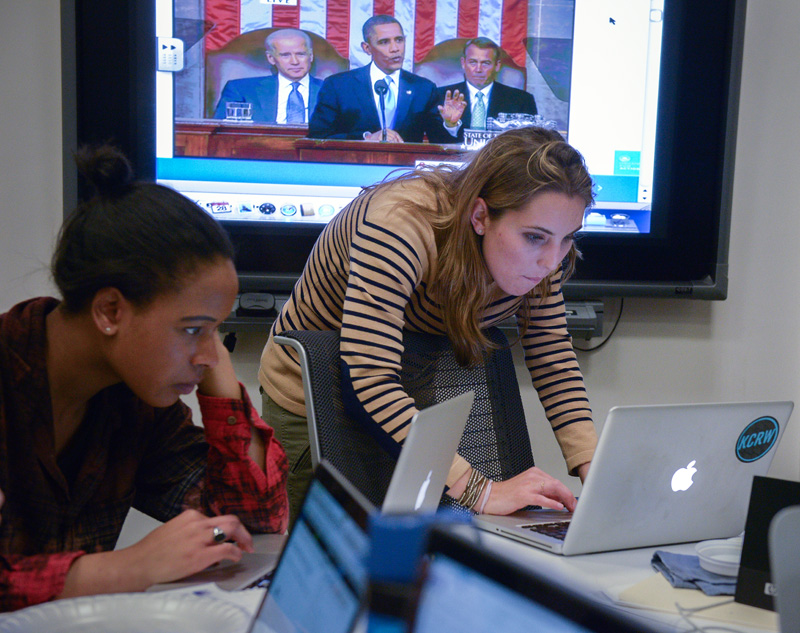
Journalism schools have long found little in common with their many critics or their academic host institutions. Higher-education scholar Abraham Flexner likened them in 1930 to "university faculties of cookery and clothing." University of Chicago president Robert Maynard Hutchins said in 1938 that journalism had been added to universities out of the "passing whims of the public."
For most of their histories, j-schools have had to look not forward to the industry for which they were preparing students, but over their shoulders at parent universities that considered them pre-professional and outside the traditional liberal arts, and didn't entirely want them, according to a 77-page report, "Educating Journalists: A New Plea for the University Tradition," issued last year by former journalism deans Nicholas Lemann of Columbia, Jean Folkerts of the University of North Carolina, and John Maxwell Hamilton of Louisiana State. Focusing on graduate education, the report urged that journalism continue to be taught in freestanding professional schools in which practicing journalists collaborate with educators. But against the backdrop of disarray in the industry, many universities have moved to merge their journalism programs into other majors or eliminate them altogether.
The provost of Indiana University is proceeding with a contentious plan to move the journalism school out of Ernie Pyle Hall and combine it with the schools of communication, telecommunications, and film. Emory University is phasing out its journalism program as part of a broad reorganization that will focus on "emerging growth areas," such as contemporary China studies. And the University of Colorado at Boulder eliminated its school of journalism in 2011 and demoted journalism to a minor, though it's since decided to open a new College of Media, Communication and Information that would include advertising, public relations, media design, communication, information science, journalism and media studies.
The number of programs in journalism and mass communication is down from 491 in 2011 to 485 in 2012 and the number of graduate programs has fallen from 222 to 217 during the same period, the University of Georgia survey found. It also reported that more than 8 percent of journalism deans say their universities are considering merging their schools with other departments.
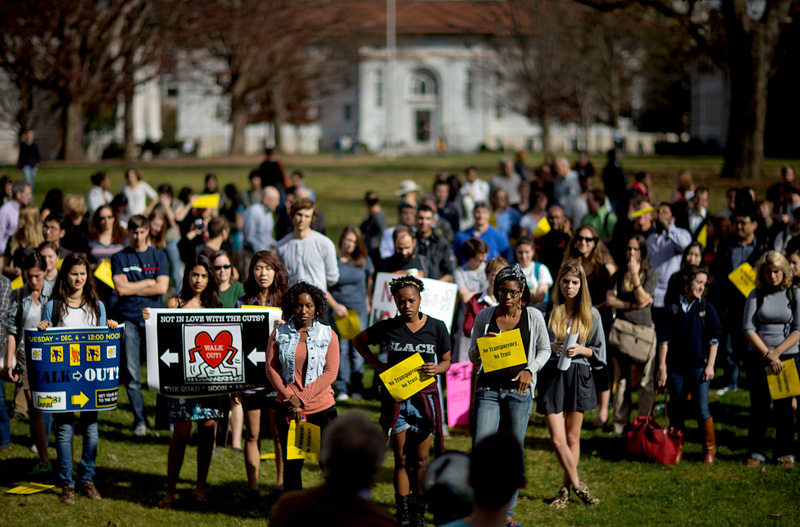
The journalism deans surveyed said their obstacles to change include limited resources for new hires and technology courses, and pushback from senior faculty and the campus bureaucracy. Merging journalism schools into larger departments layers on even more of these kinds of barriers, and further bogs down the process at the very time it needs to speed up. Newton calls this the "symphony of slowness." Existential threats are not the j-schools' only problem. Institutions that could once expect lavish support from cash-flush media organizations no longer can. Two in 10 have hiring freezes in place, according to the University of Georgia survey. Undergraduate journalism enrollments have started to drop, falling 2.9 percent in 2012, the last year for which the figure is available. That was the second consecutive decline, and the first time in two decades student numbers have gone down for two years in a row. Master's degree programs are seeing their enrollments decrease even faster, down by 9.4 percent in 2011 and another nearly 3 percent in 2012.
Many universities have moved to merge their journalism programs into other majors or eliminate them altogether
As in all of higher education, private foundations are stepping in to fill financial gaps at journalism schools. Foundations poured $146 million into journalism education and training between 2009 and 2011, the last period for which the figure is available, according to the Foundation Center. The Knight Foundation alone has poured about $200 million into it during the last 15 years. (The Knight Foundation is a funder of projects at the Nieman Foundation for Journalism.)
The foundations are using their considerable clout to push for change. Top executives from six of them—Knight, Scripps Howard, the McCormick Foundation, the Ethics and Excellence in Journalism Foundation, the Brett Family Foundation, and the Wyncote Foundation—urged nearly 500 university presidents in 2012 to speed up the pace of change of journalism education. "We believe journalism and communications schools must be willing to re-create themselves if they are to succeed in playing their vital roles as news creators and innovators," the letter said. "Schools that do not update their curriculum and upgrade their faculties to reflect the profoundly different digital age of communication will find it difficult to raise money from foundations interested in the future of news."
While university-level grants have been most common, Knight Foundation president Alberto Ibargüen recently announced a $250,000 program aimed directly at graduates. Speaking at the Cronkite School in May, Ibargüen said Knight would offer Cronkite graduates up to $15,000 to develop innovative digital storytelling and reporting techniques in their newsrooms.
Meanwhile, like every other part of higher education, journalism schools are being pressed to justify their return on families' investments, especially considering the soft job market. One third of journalism graduates in the class of 2012 were still unemployed six months after graduation, another University of Georgia survey found; of those who had jobs, 40 percent were working outside of journalism. Salaries were about flat. A quarter of bachelor's degree recipients said they regretted having studied journalism. To keep j-school relevant, "the whole thing needs to be blown up," says Amy Webb, head of digital strategy agency Webbmedia Group, who spoke about the future of journalism education at the University of Maryland's recent Journalism Interactive conference. "Little incremental changes don't amount to the kind of changes that are necessary to prepare j-school students to face the real world when they get out of school."
Universities also now have to contend with much cheaper competing delivery systems such as massive open online courses (MOOCs), short-duration professional certificate programs that take the place of conventional degrees, and other new kinds of credentials. "We are locked in a model that presumes that our students are physically present and dependent on coming into the classroom, and I'm not so sure that's going to persist," says Lee Becker, director of the James M. Cox Jr. Center for International Mass Communication Training and Research at the University of Georgia's journalism school.
The new certificate course at Columbia in coding, databases, and other skills, called the Lede Program, costs $13,456, not including living expenses. A daylong data journalism workshop hosted by Poynter News University, by comparison, goes for an early bird rate of $95. Professional associations such as Investigative Reporters and Editors offer cheap roving data seminars, and the Online News Association runs free full-day start-up, entrepreneurship, and multimedia training.
Journalism schools are being pressed to justify their return on families' investments, especially considering the soft job market
Poynter has already tested a 16-week online Journalism 101 course and compared the results to an identical course taught at Missouri State University. The students in the online course did as well as, or better than, the classroom group, based on their grades and how many stuck around to finish it. Even the people providing these new models say a $95 data workshop, for example, isn't yet a substitute for a summer-long program in a brick-and-mortar classroom. "The serious student that wants to have a professional journalism career will still want the instruction, the networking, and to work side by side with professionals," says Allissa Richardson, who teaches journalism at Bowie State University and is head of MoJo Mediaworks—"MoJo" stands for "mobile journalists." She is developing a MOOC in journalism scheduled to launch this fall. "That's where the MOOC actually falls short. The in-person experience is still superior to the online experience."
Mentoring was crucial for Thomas Huang, Sunday and enterprise editor with The Dallas Morning News, who didn't go to j-school but got bachelor's and master's degrees in computer science and engineering from MIT. For journalism to survive, that kind of mentorship has to survive, says Huang. "What I'm worried about is, I am seeing across many different newsrooms a lot of really bright and talented and aggressive young people wanting to get into the business but finding a gap in getting guidance and mentoring."
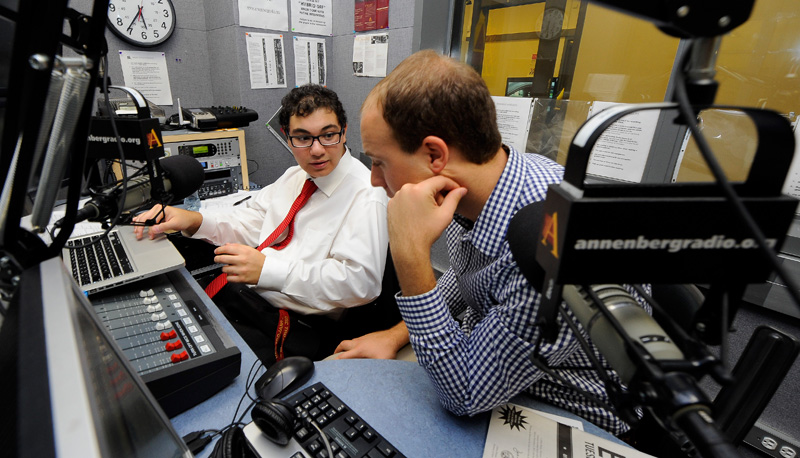
Still, says Richardson, crowdsourced opinion can substitute for the mentoring of a wise veteran editor with institutional experience, and students can put their work on YouTube and other channels to get the kinds of feedback many people in newsrooms no longer have the time to give them. Richardson says she plans to make her MOOC available to journalism schools. J-schools "can no longer rest on their laurels or reputations," she says. "They do have to consistently update how and what they teach to stay relevant."
Some of the journalism schools that are the most innovative are the newest. Housed in its own six-story, $71 million building in downtown Phoenix with 14 digital newsrooms and computer labs, two television studios, and 280 digital student workstations more cutting edge than those of some of the media companies where its graduates go on to work, the Cronkite School was spun off as an independent unit only in 2005. And while other schools' enrollments are going down, its numbers have been going up. So have those at the City University of New York, which opened its Graduate School of Journalism from scratch in 2006 and had a record class this year. "We don't have a lot of the legacy issues that some of my colleagues have," says Sarah Bartlett, dean of the CUNY journalism school.
There's one thing many journalism educators do now share, however: motivation born of a sense of urgency, and the example of what has happened to the field they serve. Connor Radnovich, the Cronkite School grad, sees it as an opportunity: "If you want to be in journalism for the jobs that existed 10 or 15 years ago, you're not going to get those. It's changing, but there are so many more opportunities."
Jon Marcus is higher-education editor at The Hechinger Report, a foundation-supported nonprofit news organization based at Columbia University

